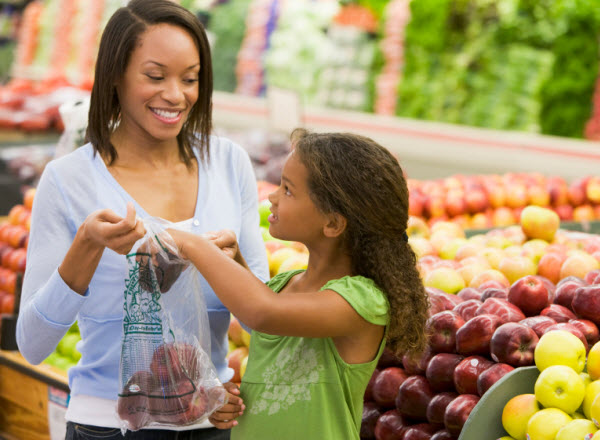It seems impossible to leave the grocery store with just one item. You may go for a gallon of milk, but you’ll leave with some tasty-looking fruit that was on sale, a box of cereal that your toddler just HAD to have, and a bag of M&Ms that you picked up in the check-out aisle. And guess what? The supermarkets design it that way. So what can you do to ensure a more streamlined, wallet-friendly trip to the grocery store, especially if you have children?
- Knowledge is power. Understanding how a grocery store is laid out may help you to avoid the traps. Your essentials (dairy, meat, produce) are all going to be in the back, toward the walls. This way, you have to walk through all the non-essential items in order to get to what you really need. In the aisles, the most basic foot items are going to be in the center of the aisle, so you have to walk down half of the aisle to get to it. And once you’re at your desired place in the aisle, the shelves are strategically organized, too: expensive stuff at your eye level, sugary/fun stuff at your kids’ eye level, and the bargain/bulk items at the bottom. Maybe this is how you end up always finding that box of sugary cereal your kids threw in your cart without you knowing…
- Plan ahead. Try not to go grocery shopping when you’re in a time pinch. Set aside a couple hours, especially if you are bringing your kids! Make a list and try not to deviate from it. And, lastly, don’t go when you’re hungry! That is a recipe for disaster.
- Understand food labels and “big” claims. Educate yourself on key components of a food label, such as calories, fat, carbohydrates, and serving sizes, and decide what is important for you. Be wary of claims like “reduced fat” and “organic,” as many of these claims aren’t what they seem. For example, “reduced fat” only means that it has to have 25% less fat than the original version – which isn’t much if the original version packed lots of fat into small serving sizes! The term organic isn’t closely regulated, either, and may not mean what you think it does. Look for the official UDSA organic logo on products to be sure.
- Make it fun. If you’re bringing kids, try to keep them entertained so you don’t end up being “that parent” with the child throwing a tantrum on the floor of the store. Have them identify colors and shapes, send them on scavenger hunts within the aisle you’re in, or let them help you get certain items.
Grocery shopping may seem more like a strategic battle than a quick errand, but hopefully with some knowledge and planning, you can make it economical and fun!
Resources:
http://www.healthychildren.org/english/healthy-living/nutrition/Pages/default.aspx



